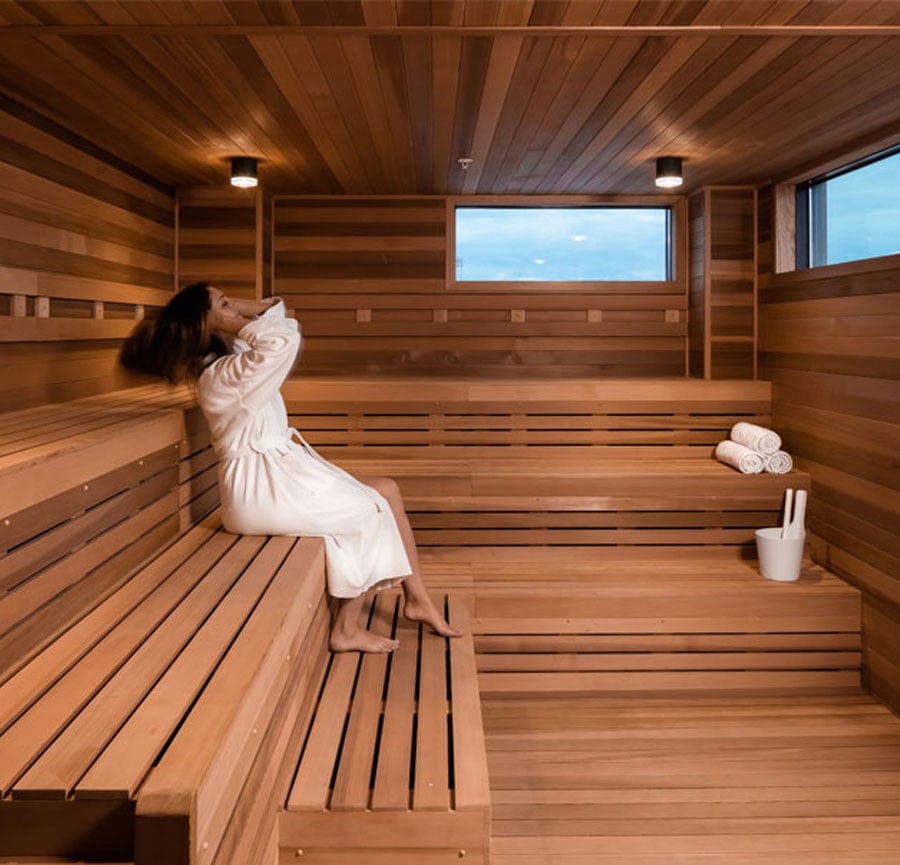The Main Principles Of Traditional Sauna
The Main Principles Of Traditional Sauna
Blog Article
The Ultimate Guide To Traditional Sauna
Table of ContentsThe 8-Minute Rule for Traditional SaunaThe Main Principles Of Traditional Sauna All About Traditional SaunaTraditional Sauna Things To Know Before You Get ThisA Biased View of Traditional Sauna
The majority of the weight shed in a sauna is water loss and is re-gained upon rehydrating. Without a doubt sauna can be an essential component of a healthy weight loss program. To consider the differences in between standard and IR saunas, I will certainly divide these right into proven, theoretical, and made distinctions.Hence, the most popular factor in the saunawhich goes to the ceiling straight above the sauna heateris usually in between 185 and 190 F. Claims that a traditional sauna exceeds 200 F is merely not real and not applicable for electrical saunas marketed in the US. The temperature for a far-infrared sauna is generally set in between 120 and 140 F; nevertheless, unlike the typical sauna, the objective in and IR space is not to attain a high temperature level.

When a standard sauna has been appropriately warmed, the sauna walls are warm, the air temperature has achieved established temperature and the rocks are extremely warmed. As an intriguing side note, the warmed wall surfaces and the rocks are discharging far-infrared warm, incorporated with the heated air, to develop an "wrapping up warm".
The 10-Second Trick For Traditional Sauna
When the heat is achieved, the components cycle on and off to preserve the high temperature level. The majority of typical sauna users enjoy pouring water over the rocks to produce steam to increase sauna moisture degrees. The advantages of putting water over the rocks consist of: making the space a lot more comfy, dampening the nasal flows, and enabling the use of aromatherapy by mixing important oils with the water.

When the energy goes into the body, it creates the body temperature level to increase and inevitably results in sweating. In an infrared sauna it's vital for the emitters/heaters to continue to be on nearly frequently. Given that there is no mass of rocks to preserve heat, the sauna will certainly cool if the emitters shut down.
Traditional Sauna Can Be Fun For Everyone
As pointed out above, the sauna bather in an infrared area desires to place himself in front of running emitters to get maximum advantage from the heat. The home heating time for the two rooms can be really various, relying on exactly how the areas are made use of. For a typical sauna, a bather must allow 30-40 mins for the area to attain a preferred temperature level and to appropriately pre-heat the rocks.

A review well constructed sauna will generally achieve a temperature of 150-160 F in about 30-40 minutes. For hotter temperatures, the space may require to warm for a longer duration.
To some, 15 minutes was "thrown away" while the infrared energy warmed the timber panels instead of heating up a body, while others locate a pre-heated room to be extra comfortable and think an elevated starting temperature level is needed to begin sweating. The size of advised usage for each and every space is approximately the exact same (10-15 mins per session); nevertheless, due to the reduced air temperature levels and the ability to really feel the results of infrared heat faster than a traditional sauna, it is not uncommon for an individual to invest a total of 20-30 mins in an infrared sauna.
About Traditional Sauna

The average price per kWH of electricity in the U.S. is about $0.11, so a 4.5 kW heater will certainly cost approximately $.50 to compete one hour, if the heating unit runs continually for one hour. Typically a sauna heater will certainly run for 75% of the first hour and 50% of subsequent hours on this website considering that the components cycle once the established temperature is accomplished.
A two individual far-infrared space is normally physically smaller sized than a traditional sauna, frequently about 4' x 4' or smaller sized. The IR heater is usually 1.5-1.7 kW utilizing a 120 volt 15 amp plug-in solution. Given that the room can be used web sooner than a sauna area, we will certainly presume the room is made use of for to of an hour consisting of warm up time.
There is a hardly ever talked about distinction in the social experience between the 2 spaces. While our culture has shed some of the social benefit of the typical sauna experience, it can be extremely socially satisfying (Traditional Sauna). From family members time in the sauna, to heart-felt discussions with substantial others, to sauna partiesthe typical sauna experience can lead to intimate socializing
An Unbiased View of Traditional Sauna
Most higher end infrared rooms consist of tinted light treatment, noise systems and full-glass fronts.
Report this page